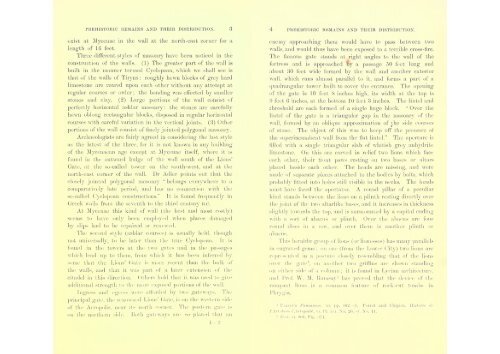THE EARLY AGE OF GREECE VOL.I by W.Ridgeway 1901
MACEDONIA is GREECE and will always be GREECE- (if they are desperate to steal a name, Monkeydonkeys suits them just fine) ΚΑΤΩ Η ΣΥΓΚΥΒΕΡΝΗΣΗ ΤΩΝ ΠΡΟΔΟΤΩΝ!!! Strabo – “Geography” “There remain of Europe, first, Macedonia and the parts of Thrace that are contiguous to it and extend as far as Byzantium; secondly, Greece; and thirdly, the islands that are close by. Macedonia, of course, is a part of Greece, yet now, since I am following the nature and shape of the places geographically, I have decided to classify it apart from the rest of Greece and to join it with that part of Thrace which borders on it and extends as far as the mouth of the Euxine and the Propontis. Then, a little further on, Strabo mentions Cypsela and the Hebrus River, and also describes a sort of parallelogram in which the whole of Macedonia lies.” (Strab. 7.fragments.9) ΚΚΕ, ΚΝΕ, ΟΝΝΕΔ, ΑΓΟΡΑ,ΕΚΚΛΗΣΙΑ,ΝΕΑ,ΦΩΝΗ,ΦΕΚ,ΝΟΜΟΣ,LIFO,MACEDONIA, ALEXANDER, GREECE,IKEA
MACEDONIA is GREECE and will always be GREECE- (if they are desperate to steal a name, Monkeydonkeys suits them just fine)
ΚΑΤΩ Η ΣΥΓΚΥΒΕΡΝΗΣΗ ΤΩΝ ΠΡΟΔΟΤΩΝ!!!
Strabo – “Geography”
“There remain of Europe, first, Macedonia and the parts of Thrace that are contiguous to it and extend as far as Byzantium; secondly, Greece; and thirdly, the islands that are close by. Macedonia, of course, is a part of Greece, yet now, since I am following the nature and shape of the places geographically, I have decided to classify it apart from the rest of Greece and to join it with that part of Thrace which borders on it and extends as far as the mouth of the Euxine and the Propontis. Then, a little further on, Strabo mentions Cypsela and the Hebrus River, and also describes a sort of parallelogram in which the whole of Macedonia lies.”
(Strab. 7.fragments.9)
ΚΚΕ, ΚΝΕ, ΟΝΝΕΔ, ΑΓΟΡΑ,ΕΚΚΛΗΣΙΑ,ΝΕΑ,ΦΩΝΗ,ΦΕΚ,ΝΟΜΟΣ,LIFO,MACEDONIA, ALEXANDER, GREECE,IKEA
Create successful ePaper yourself
Turn your PDF publications into a flip-book with our unique Google optimized e-Paper software.
PREHISTORIC REMAINS AND <strong>THE</strong>IR DISTRIBUTION. 3<br />
exist at Mycenae<br />
in the wall at the north-east corner for a<br />
length of 16 feet.<br />
Three different styles of masonry have been noticed in the<br />
construction of the walls. (1) The greater part of the wall is<br />
built in the manner termed Cyclopean, which we shall see is<br />
that of the walls of Tiryns roughly hewn blocks of grey hard<br />
:<br />
limestone are reared upon each other without any attempt at<br />
regular courses or order ;<br />
the bonding was effected <strong>by</strong> smaller<br />
stones and clay. (2) Large portions of the wall consist of<br />
perfectly horizontal ashlar masonr}' : the stones are carefully<br />
hewn oblong rectangular blocks, disposed in regular horizontal<br />
courses with careful variation in the vertical joints. (3) Other<br />
portions of the wall consist of finely jointed polygonal masonry.<br />
Archaeologists are fairly agreed in considering the last style<br />
as the latest of the three, for it is not known in any building<br />
of the Mycenaean age except at Mycenae itself, where it is<br />
found in the outward bulge of the Avail south of the Lions'<br />
Gate, at the so-called tower on the south-west, and at the<br />
north-east corner of the wall. Dr Adler points out that the<br />
closely jointed polygonal masonry " belongs everywhere to a<br />
comparatively late period, and has no connection with the<br />
so-called Cyclopean constructions." It is found frequently in<br />
Greek walls from the seventh to the thii'd century B.C.<br />
At Mycenae this kind of wall (the best and most costly)<br />
seems to have only been employed when places damaged<br />
<strong>by</strong> slips had to be repaired or renewed.<br />
The second style (ashlar courses) is<br />
usually held, though<br />
not universally, to be later than the true Cyclopean. It is<br />
found in the towers at the two gates and in the passages<br />
Avliich lead up to them, from which it has been inferred <strong>by</strong><br />
some that the Lions' CJate is moiv recent than the bulk of<br />
the walls, and that it was part of a later extension ot' the<br />
citadel in this direction. Others lu/ld that it was used to give<br />
additional strength to the in(i'e e.\])os('d portions<br />
of the wall.<br />
Lisrres.s and ein'oss were aft'ordcd <strong>by</strong> two

















